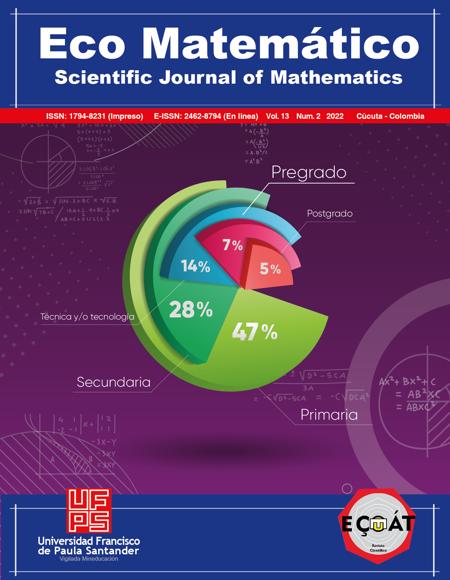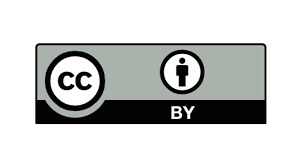Infinitesimal perspectives in the characterization of diagrams associated with Gottfried Wilhelm Leibniz's speeches
Perspectivas infinitesimales en la caracterización de diagramas asociados a los discursos de Gottfried Wilhelm Leibniz
Main Article Content
Mathematical practice is linked to various discourses and mathematical activities consolidated by authors, manifesting itself in methods and elements that can be the object of analysis in the work of some people whose main intention is to characterize their practice. One way of analyzing the referred elements is by making use of diagrams (understood as cognitive tools) that allow to recognize some scopes arranged in the approaches. The above highlights the fact of making a continuous monitoring of the situation and its resolution from the mathematical point of view, however, it should be noted that to make this type of rigorous exercises it is necessary to use the original writings of the author, in this case, Gottfried Wilhelm Leibniz. For this reason, the present work will refer to elements linked to the discourse on infinitesimal perspectives, oriented mainly on the treatment, the need for the diagram and the mathematical activities involved. Subsequently, we will consider the analysis constructed in relation to the approaches that Leibniz made in each document and the appreciations on the pertinence of these diagrams when using them in mathematics education.
Downloads
Article Details
Arreaza, T. & Valencia, I. (2015). La resolución de problemas matemáticos: Una estrategia en el aula de clase. Acta latinoamericana de matemática educativa. http://funes.uniandes.edu.co/10822/1/Arreaza2015La.pdf
Bello Chávez, J. (2021). Diagrama y práctica matemática en la geometría cartesiana (1637-1750): Contribución de la historia de la matemática a la formación de profesores. Repositorio de la Universidad del Valle. https://bibliotecadigital.univalle.edu.co/handle/10893/21329
Medina, N. (2008). La ciencia cognitiva y el estudio de la mente. IIPSI, 11(1). https://dialnet.unirioja.es/descarga/articulo/2747355.pdf
Bello, J. & Forero, A. (c. 2016). El conocimiento didáctico del profesor de matemáticas. En Una experiencia con la Geometría de Descartes. Editorial UD. https://editorial.udistrital.edu.co/contenido.php?id=846&f=6
Penagos, C. (2013). Aportes realizados por Leibniz a la consolidación del cálculo diferencial [Tesis de pregrado]. Universidad Pedagógica Nacional.
Gómez, B. (2019, mayo). Los libros de texto de matemáticas y el análisis histórico y epistemológico. Números - Revista de Didáctica de las Matemáticas. https://core.ac.uk/download/pdf/286786938.pdf
González, O. (2014). El cálculo infinitesimal Leibniciano: una síntesis de las perspectivas de Brunschvicg e Ishiguro. Signos Filosóficos, VI (11), 97-120. http://www.redalyc.org/articulo.oa?id=34301105
Gordillo, W. & Pino R. (2016, agosto). Una Propuesta de Reconstrucción del Significado Holístico de la Antiderivada. Bolema: Boletim de Educação Matemática, 30(55), 535-558. https://doi.org/10.1590/1980-4415v30n55a12 DOI: https://doi.org/10.1590/1980-4415v30n55a12
Guacaneme, E. A. (2010). ¿Qué tipo de historia de las matemáticas debe ser apropiada por un profesor? Revista Virtual EDUCyT , 2, pp. 1-13.
Gillibert, P., & Wehrung, F. (2011). From objects to diagrams for ranges of functors. Springer Berlin Heidelberg. DOI: https://doi.org/10.1007/978-3-642-21774-6
Ferreiros (2016). Mathematical Knowledge and the Interplay of Practices. ResearchGate. https://www.researchgate.net/publication/340341237_Mathematical_Knowledge_and_the_Interplay_of_Practices DOI: https://doi.org/10.23943/princeton/9780691167510.001.0001
Kilpatrick, J., Gómez, P. & Rico, L. (1998). Educación Matemática. Errores y dificultades de los estudiantes. Resolución de problemas. Evaluación. Historia (2.a ed.) [PDF]. http://funes.uniandes.edu.co/679/
Knobloch, E. (2002). Leibniz’s rigorous foundation of infinitesimal geometry by means of Riemannian sums. Phil Papers. https://philpapers.org/rec/KNOLRF DOI: https://doi.org/10.1023/A:1020859101830
Knobloch, E., Stock, A., Jost, J., Wagner, H.G., Wolf, M. (2016). De quadratura arithmetica circuli ellipseos et hyperbolae cujus corollarium est trigonometria sine tabulis. In: Knobloch, E. (eds) Gottfried Wilhelm Leibniz. Klassische Texte der Wissenschaft. Springer Spektrum, Berlin, Heidelberg. https://doi.org/10.1007/978-3-662-52803-7_1 DOI: https://doi.org/10.1007/978-3-662-52803-7
Leibniz (1684) Un nuevo método para los máximos y los mínimos, así como para las tangentes, que no se detiene ante las cantidades fraccionarias o irracionales, y es un singular género de cálculo para estos problemas. Acta Eruditorum
Leibniz (1686) Sobre una geometría altamente oculta y el análisis de los indivisibles y los infinitos. Acta Eruditorum
Medina C., N. (2008). La ciencia cognitiva y el estudio de la mente. Revista de investigación en psicología, 11(1), 183+. https://link.gale.com/apps/doc/A298615502/IFME?u=anon~b660c2dd&sid=googleScholar&xid=2fb0ca21 DOI: https://doi.org/10.15381/rinvp.v11i1.3890
Moreno Armella, L., (2014). Intuir y formalizar: procesos coextensivos. Educación Matemática, ( ), 185-206. https://www.redalyc.org/articulo.oa?id=40540854010
Pietarinen, A., Chapman, P., Bosveld, L., Giardino, V., Corter, J. & Linker, S. (s. f.). Diagrammatic representation and inference (1.a ed.). Springer. https://link.springer.com/book/10.1007/978-3-030-86062-2
Salamanca, D. (2019). Una experiencia con las prácticas matemáticas asociadas en el hacer de las cuadraturas [Tesis de pregrado]. Universidad Distrital Francisco José de Caldas.







